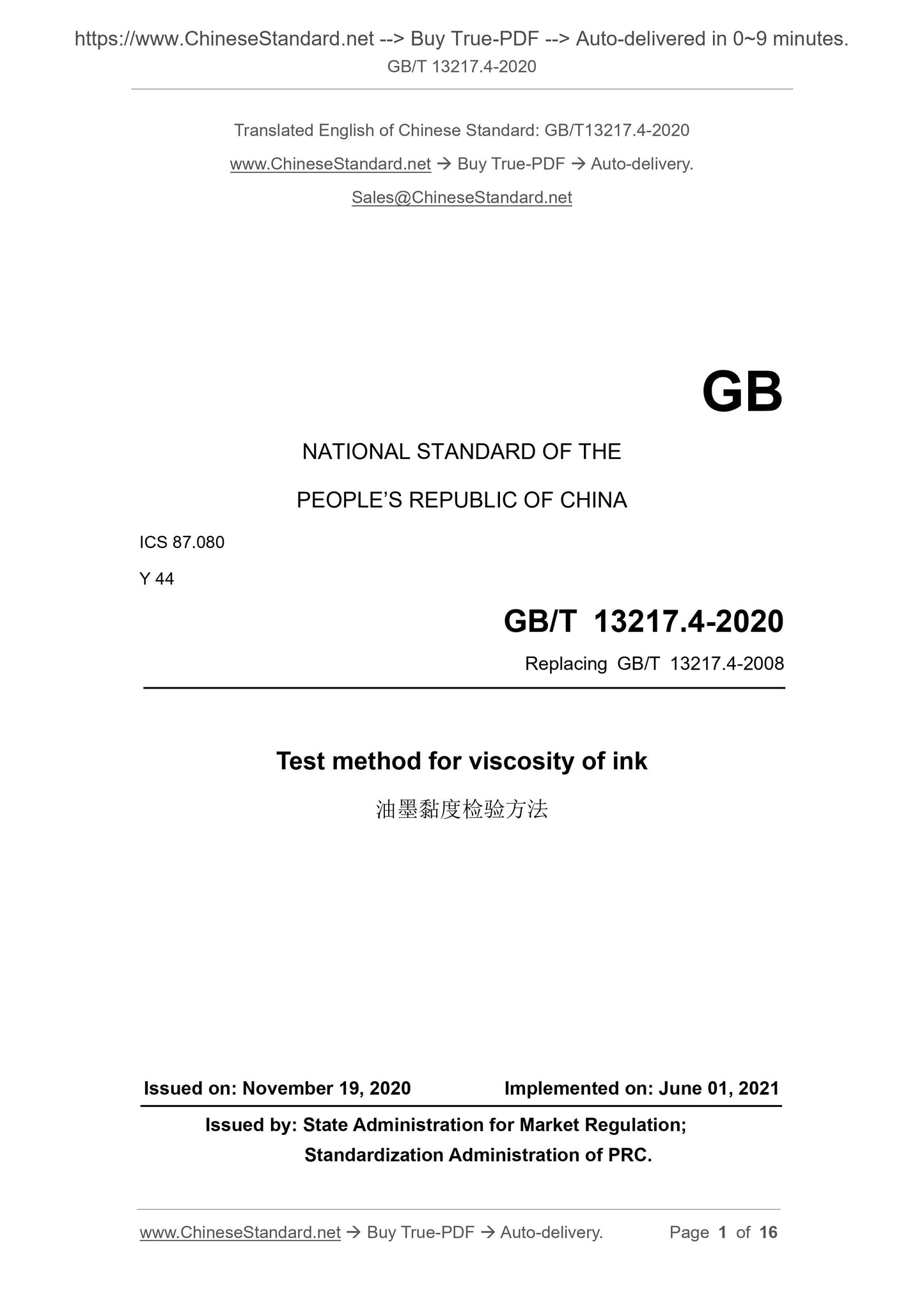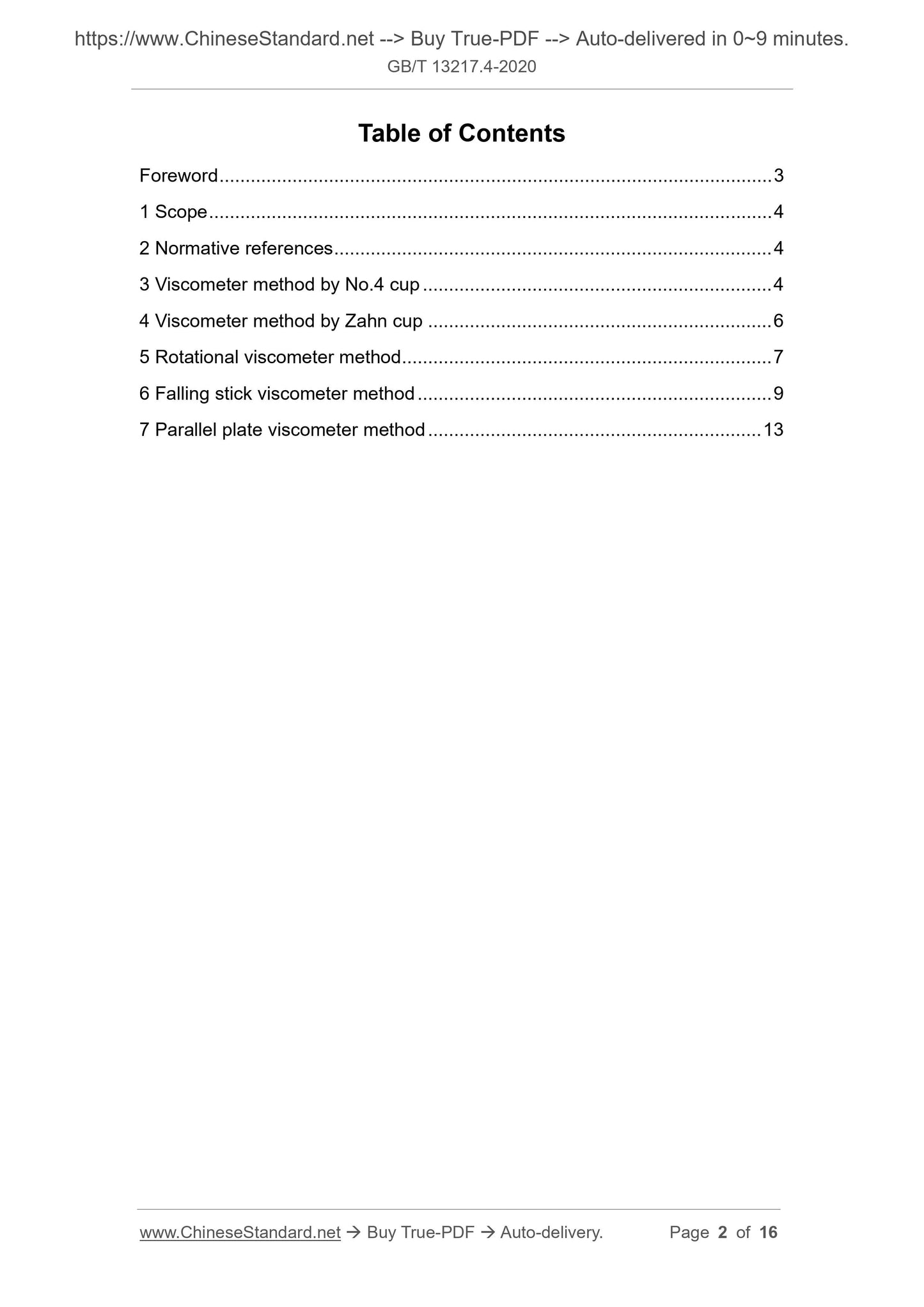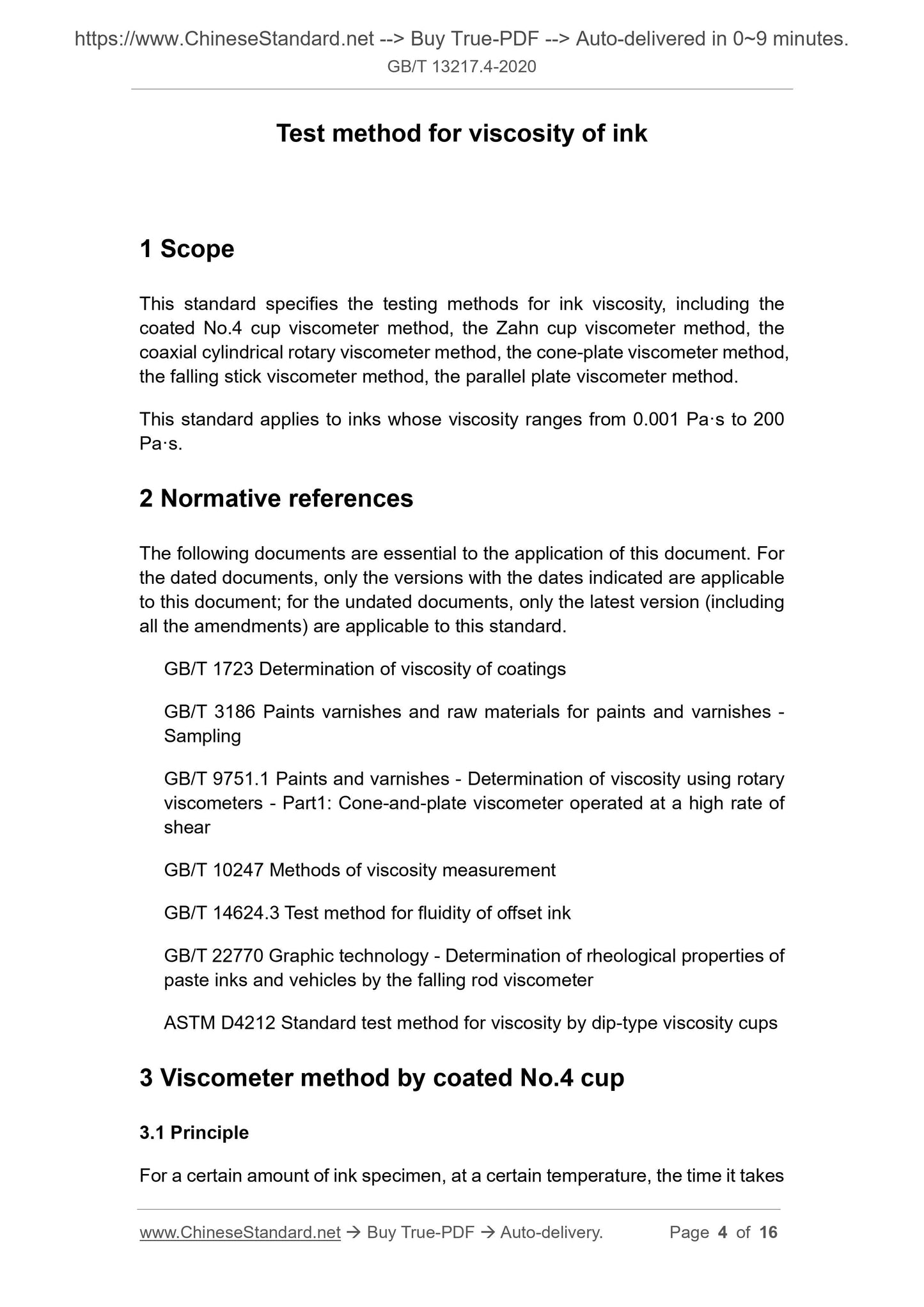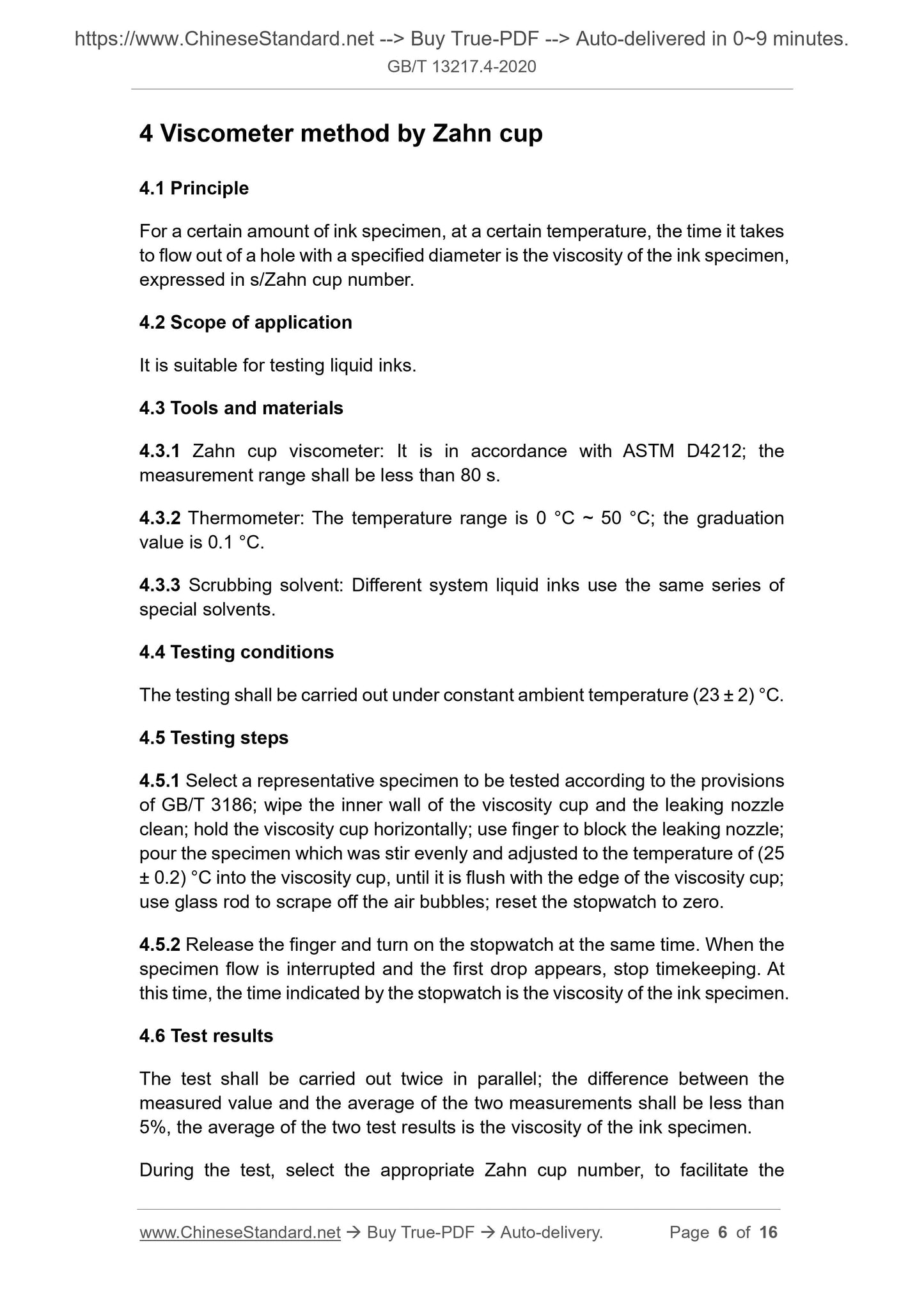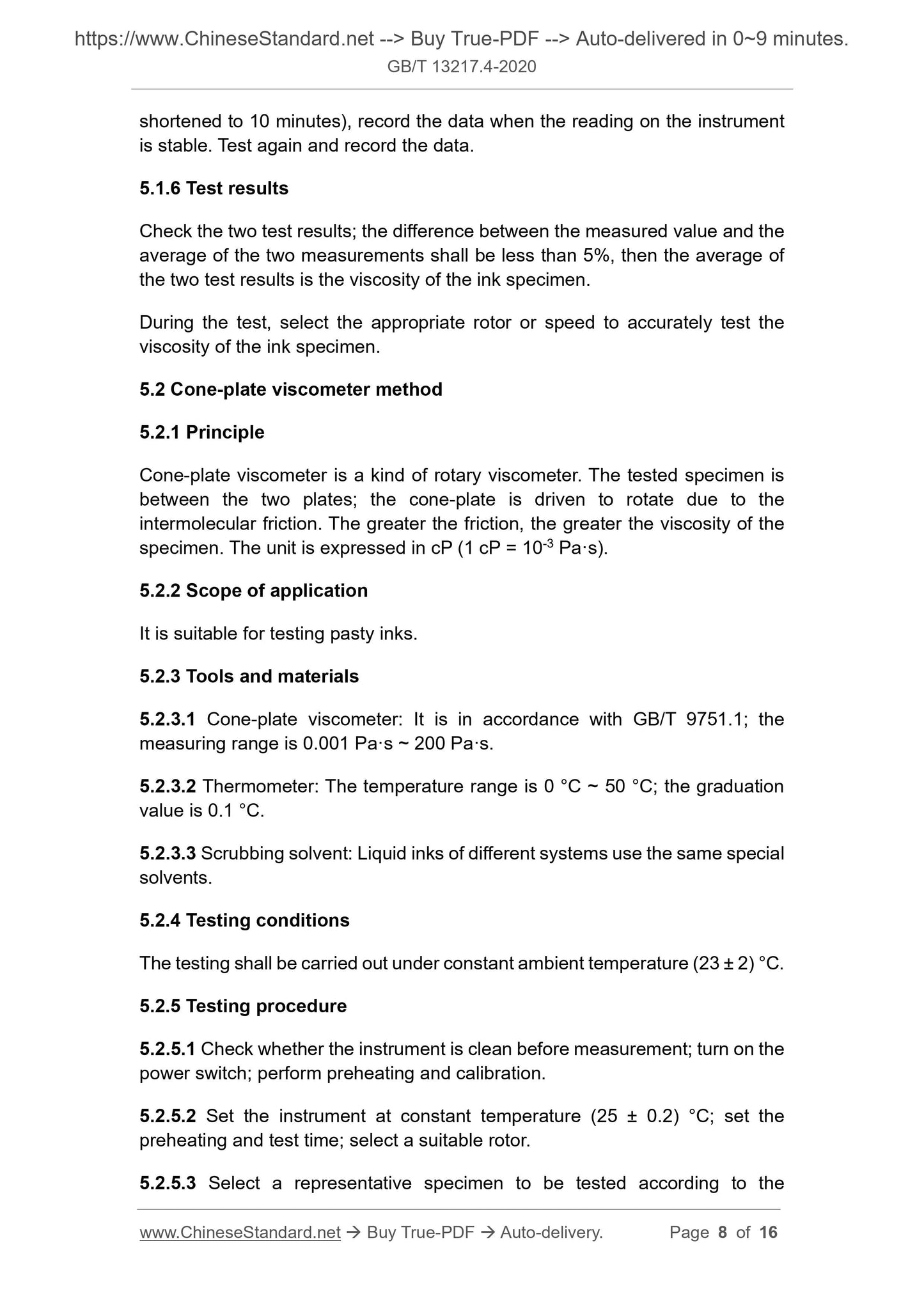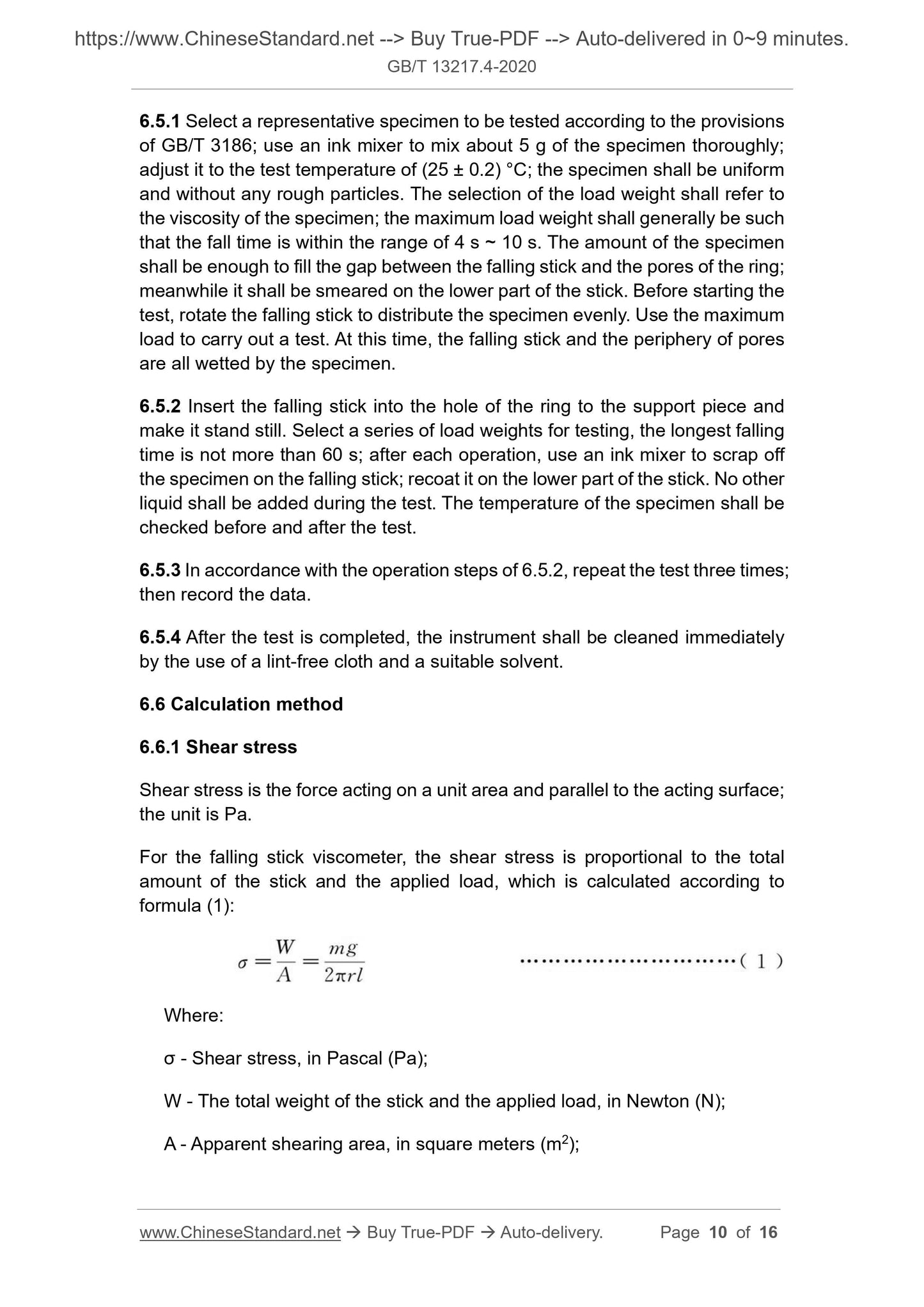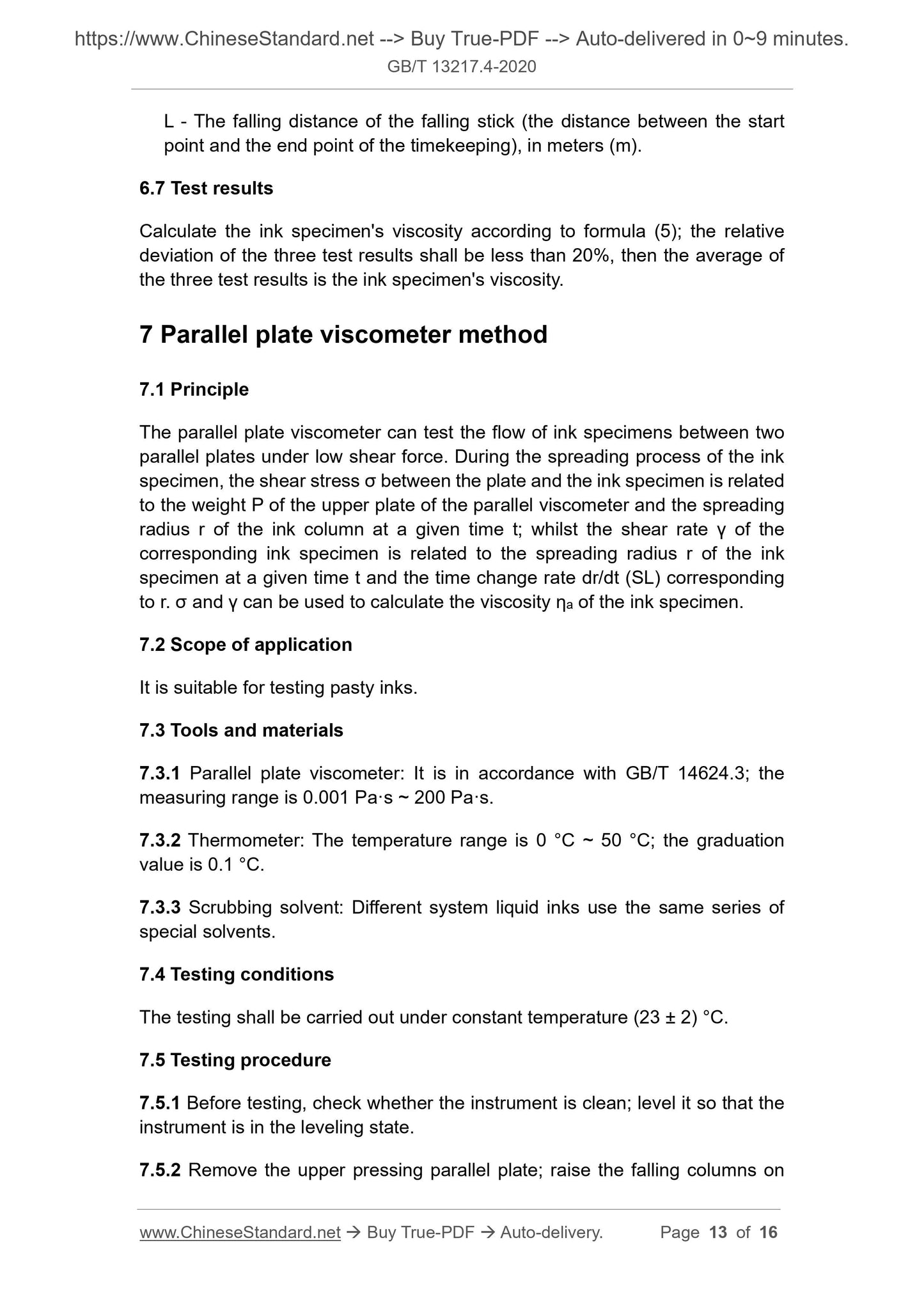1
/
of
7
www.ChineseStandard.us -- Field Test Asia Pte. Ltd.
GB/T 13217.4-2020 English PDF (GB/T13217.4-2020)
GB/T 13217.4-2020 English PDF (GB/T13217.4-2020)
Regular price
$165.00
Regular price
Sale price
$165.00
Unit price
/
per
Shipping calculated at checkout.
Couldn't load pickup availability
GB/T 13217.4-2020: Test method for viscosity of ink
Delivery: 9 seconds. Download (and Email) true-PDF + Invoice.Get Quotation: Click GB/T 13217.4-2020 (Self-service in 1-minute)
Newer / historical versions: GB/T 13217.4-2020
Preview True-PDF
Scope
This standard specifies the testing methods for ink viscosity, including thecoated No.4 cup viscometer method, the Zahn cup viscometer method, the
coaxial cylindrical rotary viscometer method, the cone-plate viscometer method,
the falling stick viscometer method, the parallel plate viscometer method.
This standard applies to inks whose viscosity ranges from 0.001 Pa·s to 200
Pa·s.
Basic Data
| Standard ID | GB/T 13217.4-2020 (GB/T13217.4-2020) |
| Description (Translated English) | Test method for viscosity of ink |
| Sector / Industry | National Standard (Recommended) |
| Classification of Chinese Standard | Y44 |
| Classification of International Standard | 87.080 |
| Word Count Estimation | 10,156 |
| Date of Issue | 2020-11-19 |
| Date of Implementation | 2021-06-01 |
| Older Standard (superseded by this standard) | GB/T 13217.4-2008 |
| Regulation (derived from) | National Standard Announcement No. 26 of 2020 |
| Issuing agency(ies) | State Administration for Market Regulation, China National Standardization Administration |
Share
